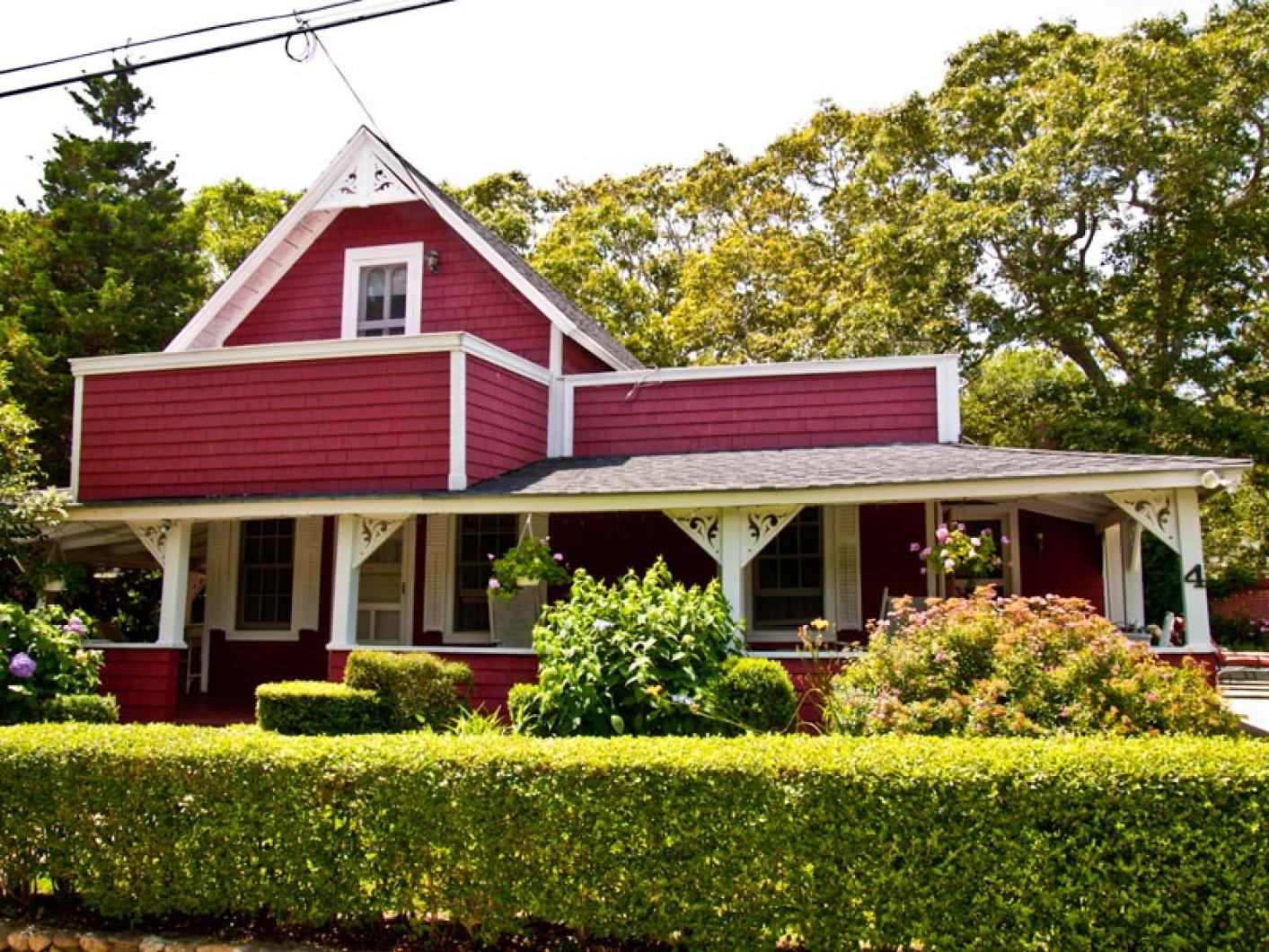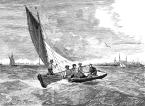The Highlands, as they are familiarly known, are located on East Chop, the general boundary being laid out like the Methodist Camp Ground in Oak Bluffs, with a central circle ringed by house lots along curving avenues. For a time during the 19th and early 20th centuries, people of color could purchase homes on the Vineyard only in this area. The result was a close-knit community of regular folk mixed with residents of national acclaim. The Harlem Renaissance author Dorothy West owned a home here, as did Adam Clayton Powell Jr., a member of the House of Representatives for 16 years who later served as chairman of the education and labor committee during the Kennedy and Johnson administrations.
Each year, for the past 29 years, the Cottagers Inc. conducts a tour of the Highlands, visiting many homes and historical sites in the area. This year the tour, which is a fundraiser and costs $20, takes place on Thursday, July 19, from 10 a.m. to 3 p.m. Meet at Cottagers Corner, located at 65 Pequot avenue in Oak Bluffs.
The Cottagers is a philanthropic organization of approximately 100 women of color who are property owners on the Island. The organization recently celebrated its 50th year of fundraising and continuing financial assistance for various programs, including the Martha’s Vineyard Hospital, Oak Bluffs police and fire departments, the Oak Bluffs library, the Council on Aging, NAACP, Windemere and numerous scholarships for graduating high school seniors.
The tour will visit eight sites this year, detailed as follows.
Dorothy West House, 10 Myrtle avenue
Dorothy West was relatively unknown beyond the Vineyard during much of her life, but during her later years she gained worldwide recognition. Ultimately, she became one of the most accomplished story writers of the century. She collaborated with Jacqueline Kennedy Onassis when working on her book The Wedding. The book was published in 1995 when Ms. West was 88 years old. Oprah Winfrey produced a movie based on the book.
Ms. West was the last surviving member of the Harlem Renaissance, a group of black artists and authors. She loved to entertain on her porch and a street near her home is named in her honor.
“She created a sort of upper-class drawing room effect as she served tea on her porch,” said Henry Louis Gates Jr.
Dorothy West was an early member of the Cottagers Inc. Her father, Isaac Christopher West, was a successful fruit merchant nicknamed the Black Banana King. He was born into slavery in Virginia and yet, ultimately, he was able to provide a summer home for his family. Dorothy was raised in Boston and attended the prestigious Girls’ Latin School.
Adam Clayton Powell Jr. House, 15 Dorothy West Lane
The house, nicknamed Bunny Cottage, was built in 1895. It was purchased in 1937 by Adam Clayton Powell Jr. and his wife, Isabel Washington. They came to the Vineyard each summer to fish, drink, eat and escape the grind of everyday life.
Mr. Powell also wrote many sermons in the quiet parlor of the house. The tall barn-like kitchen and the long wraparound porch was loved by all family members. Many debates, arguments and intellectual thoughts developed on the porch. Guests included Matthew Henson, the black explorer who placed the American flag on the North Pole, and Louis Armstrong and his wife, Lucille.
Shearer Cottage, 4 Morgan avenue
Shearer Cottage was purchased by Henrietta Merchant Shearer in 1903. That same year she opened the Shearer Laundry. The long house was added to the property to accommodate this laundry, which turned into a thriving business with eight employees.
In 1912 the Shearers opened an inn. Some of the guests who stayed there were actor and activist Paul Robeson, actress Ethel Waters, self-made millionaire Madam Walker, and the Rev. Adam Clayton Powell Sr.
During the 1960s the owners refurbished the 12 guest rooms into six efficiency units with private baths and kitchenettes. The inn also contains many antiques and mementos acquired over the past century, both within the house and outside in the yard.
The garden at Shearer Cottage has been developed over the years by various family members, with pink roses and evergreen trees planted in memory of those who have died. Charles Shearer was born a slave to a wealthy white plantation owner and his black slave in 1854 in Virginia. He worked as a laborer and eventually enrolled at Hampton Institute, graduating in 1840. Mr. Shearer taught school, purchased real estate, ran a business and eventually moved with his wife, Henrietta, to Massachusetts and purchased a cottage on Martha’s Vineyard.
The early meetings of the Cottagers Inc. were hosted by Shearer Cottage.
Baptist Temple Park
The Baptist Temple was built in 1878 and European/Americans of faith began to build homes there. The population also included black Americans, as it was, for a time, the only welcoming place for blacks on the Island.
During the latter part of the 19th century, the Methodist and Baptist associations supported each other’s efforts and activities. Each August the Baptist camp meeting convened the week before the Methodist convention. After a decade or more of disuse and a destructive fire, the Baptist Temple grounds were put up for sale. The Massachusetts Baptists Association sold the site to the Highland Property Trust, a group of East Chop residents who wanted to maintain the integrity of the local community.
Coleman Corner, 11, 12, 14 and 16 Myrtle avenue
The name Coleman Corner refers to four homes presided over by Grandmother Luella Coleman, who first visited the Vineyard as a child and returned years later with her husband, Ralf, and two young children. They purchased three lots in 1944. The lots were first laid out on a map dated 1869.
Ralf worked as a presser in the garment district of Boston and Luella worked at whatever part-time jobs she could find, so that she could return to the Vineyard each summer with her four children. Over time, Luella purchased five more lots on both sides of Myrtle avenue extending to Glenwood avenue.
The family was not affluent or even middle-class, and made numerous sacrifices to afford these lots. Granny Luella lived at 12 Myrtle avenue until she was 97 years old, at which time she moved to Windemere nursing home. She returned to the house for day trips until her death in 1995 at the age of 100.
Today the extended family continues to spend summers at Coleman Corner, returning to the Island from their homes in Maryland and California, ever thankful that a fifth generation of Coleman children will be able to experience and enjoy Martha’s Vineyard.
Robin R. Bolles House, 15 Moss avenue
The home was built by the parents of Robin Bolles. As a gift to her mother, Robin started a garden as a four-season space of foliage. Initially, her mother tamed the land, but time, weather and Mother Nature have given the garden more of a free-flowing feel. There are drifts of daylilies and a border of rose of Sharon and hydrangea which keeps the internal garden private. There is also a sea shell pathway.
The garden serves as a happy reminder of Robin’s mother, who for many years enjoyed weeding and wandering about the space.
Denise Rhone House, 15 Laurel avenue
The house was originally built in 1872 and purchased in 1960 by Ms. Rhone’s great aunt and uncle, Ruby and John Smith. They retired to the Highlands from Roxbury and were politically active both in Roxbury and Oak Bluffs.
Ruby Smith loved gardens and planted whatever looked pretty. In 2003, Denise began maintaining the garden in memory of her aunt. Astilbes, calla lilies, irises, hostas and hydrangeas enrich the yard.
Linc and Lois Cornell House, 26 Wayland avenue
The Cornells have been living in this house for three years. They purchased it from a family who had lived in it for 50 years. The garden was created in 2009 with traditional plantings for low maintenance. There are over 40 varieties of hostas and a thriving vegetable garden used to enhance summer meals.










Comments
Comment policy »